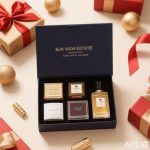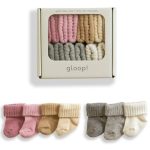In the dazzling world of beauty and personal care, cosmetic packaging serves as the silent ambassador of your brand. While vibrant designs and elegant shapes capture initial attention, it’s the packaging material that ultimately determines product protection, user experience, and environmental impact. The choice between cardboard, recycled paper, rigid boxes, or sustainable alternatives isn’t merely practical—it’s a strategic statement about your brand’s values and commitment to quality.
Cardboard remains the workhorse of cosmetic packaging, prized for its versatility and cost-effectiveness. From simple folding cartons for mass-market products to premium-grade versions for luxury items, cardboard can be engineered to meet diverse needs. Its natural rigidity provides excellent protection against physical damage during shipping, while various finishing options like matte or gloss lamination allow for sophisticated branding. However, not all cardboard is created equal—recycled content percentages and FSC-certified sources have become crucial considerations for environmentally conscious brands.
For brands targeting the luxury segment, rigid boxes represent the pinnacle of packaging sophistication. These sturdy structures, typically made from high-density paperboard, create an unboxing experience that feels both substantial and exclusive. The satisfying weight and crisp opening mechanism trigger positive emotional responses that customers associate with product quality. When lined with plush velvet or satin, rigid boxes become keepsake containers that customers reuse, extending brand visibility far beyond the initial purchase.
The sustainability revolution has transformed cosmetic packaging material selection dramatically. Biodegradable options like mushroom-based packaging, seaweed derivatives, and cornstarch materials are gaining traction among eco-conscious consumers. These innovative solutions decompose naturally without leaving harmful residues, addressing the beauty industry’s historical waste problem. Meanwhile, PCR (Post-Consumer Recycled) plastics offer another sustainable pathway, giving existing materials new life while reducing dependence on virgin petroleum-based products.
Functionality remains paramount in material selection. Cosmetics often contain active ingredients sensitive to light, air, and temperature fluctuations. UV-resistant coatings, airtight seals, and insulated liners integrated into packaging materials preserve product efficacy from manufacturing to final application. For liquid-based products, water-resistant barriers prevent leakage and maintain structural integrity, while anti-microbial treatments provide additional protection for products applied directly to skin.
The tactile experience of packaging material profoundly influences consumer perception. Soft-touch coatings transform ordinary paperboard into velvety surfaces that invite handling, while embossed logos and textured finishes create visual and tactile depth. These subtle details communicate quality before customers even experience the product inside. The satisfying ‘click’ of a magnet closure or the smooth glide of a precision-folded box contributes to an overall impression of craftsmanship and attention to detail.
Innovative hybrid materials are pushing cosmetic packaging into new territories. Paper-plastic composites offer the sustainability appeal of paper with the moisture resistance of plastic, while wood-pulp based materials provide rustic elegance with modern durability. Some forward-thinking brands are even experimenting with seed-embedded papers that customers can plant after use, creating a powerful narrative about growth and regeneration that aligns perfectly with beauty industry values.
Ultimately, cosmetic packaging materials represent a convergence of protection, presentation, and philosophy. The modern consumer evaluates packaging through multiple lenses: aesthetic appeal, functional performance, environmental responsibility, and sensory pleasure. Brands that successfully balance these elements don’t just create containers—they create brand experiences that resonate deeply with their audience. In an increasingly crowded marketplace, your packaging material choice might be the most important beauty statement you make.




Leave a Message